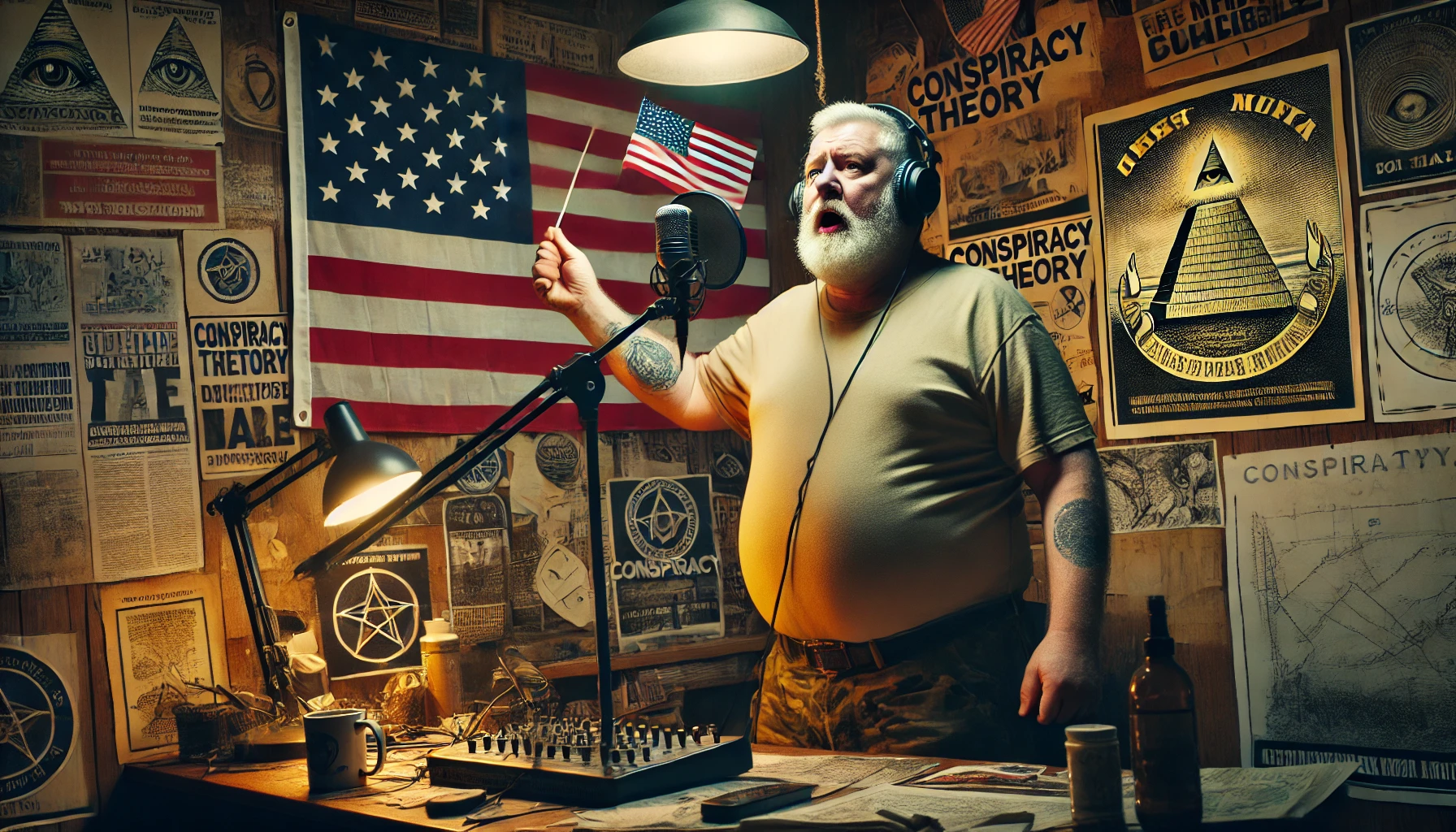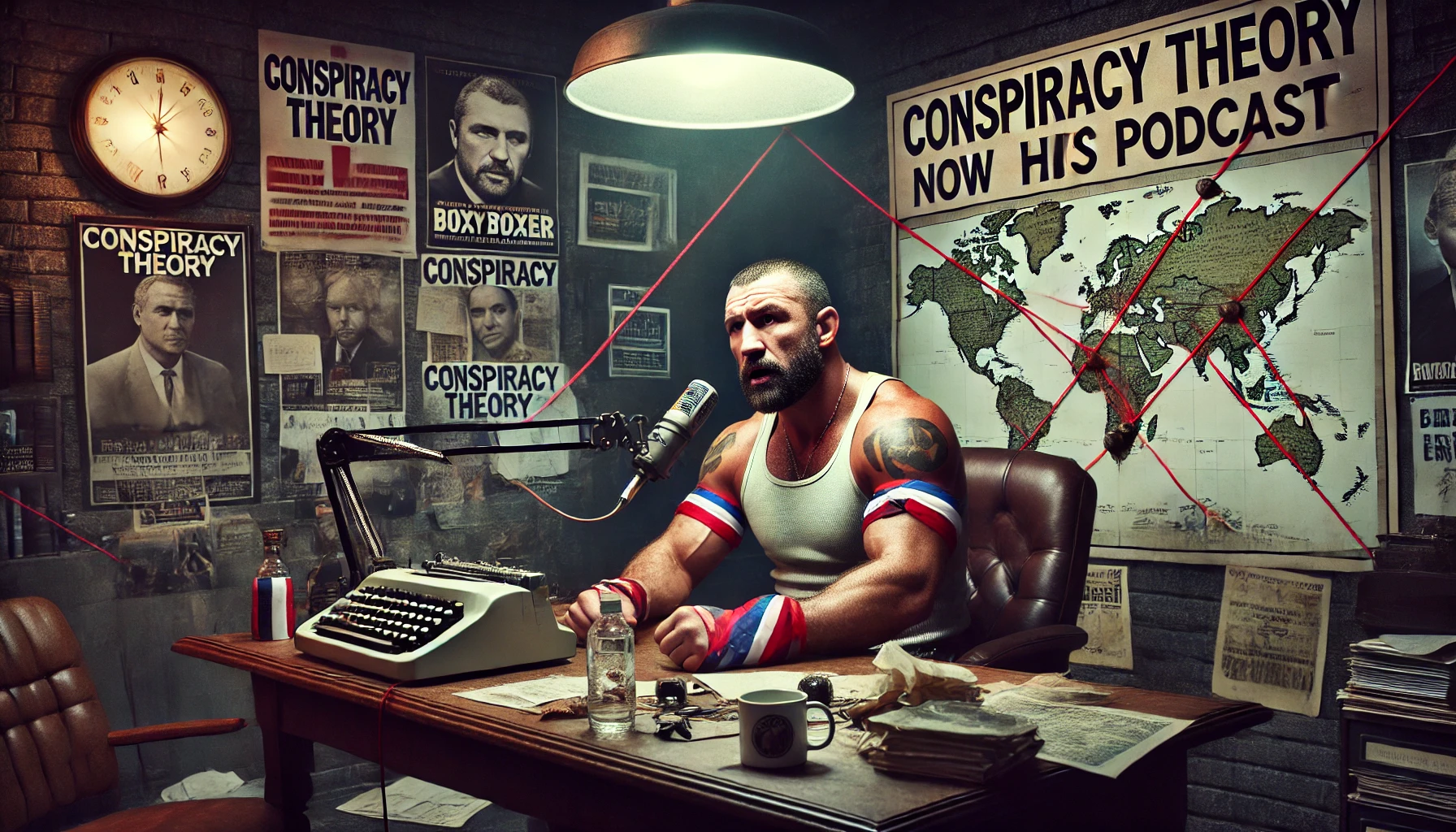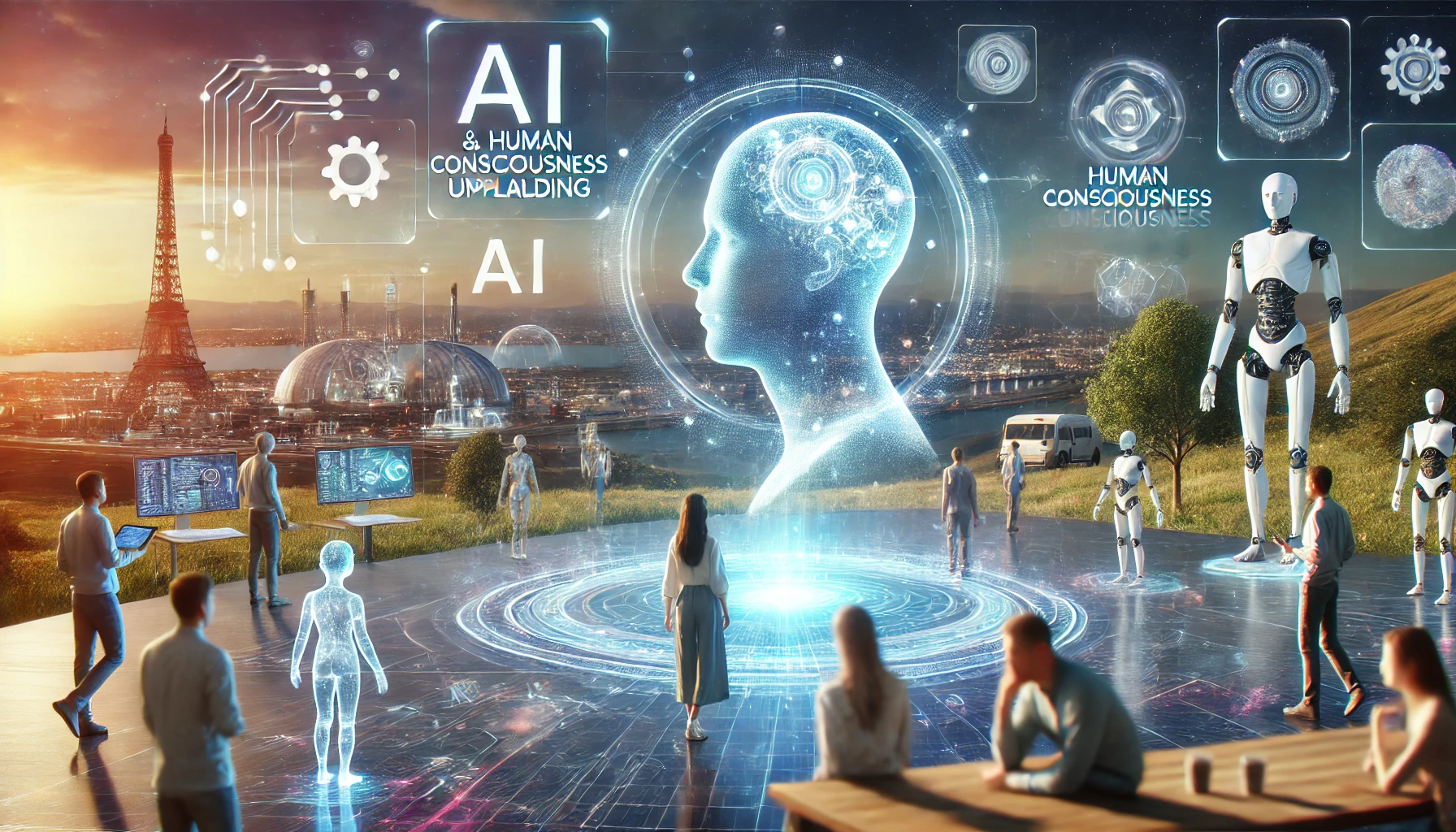
Alex Jones: The Polarizing Voice of Conspiracy Theories
Introduction
Alex Jones is one of the most controversial and polarizing figures in contemporary media. Known for his incendiary rhetoric and conspiracy theories, Jones has built a substantial following through his media platform, Infowars. Over the years, he has covered a wide array of topics, from government surveillance and secret societies to alleged false flag operations and alternative health remedies. This article offers a comprehensive examination of Alex Jones, highlighting his influence, the controversies surrounding him, and the instances where his claims have intersected with truth.
Early Life and Career
Alexander Emric Jones was born on February 11, 1974, in Dallas, Texas. He grew up in a conservative Christian household and developed an interest in media and politics from an early age. Jones’s career in media began in the 1990s when he hosted a call-in public access television program in Austin, Texas. His early shows focused on government overreach, civil liberties, and conspiracy theories, topics that would become the cornerstone of his career.
In 1996, Jones transitioned to radio, where his aggressive style and willingness to entertain fringe theories quickly garnered attention. His show, “The Alex Jones Show,” became known for its provocative content and unabashed critique of mainstream narratives. By the early 2000s, Jones had established Infowars, an online platform that would become his primary vehicle for disseminating his views.
Infowars and Rise to Prominence
Infowars, launched in 1999, began as a website and gradually expanded to include radio broadcasts, videos, and written content. The platform’s tagline, “There’s a war on for your mind,” reflects its mission to challenge mainstream media and provide alternative perspectives. Infowars covers a wide range of topics, including politics, health, technology, and global events, often through the lens of conspiracy theories.
Jones’s rise to prominence can be attributed to his ability to tap into the fears and suspicions of a segment of the population that feels disenfranchised by mainstream institutions. His charismatic and combative style, combined with his willingness to tackle controversial subjects, has earned him a devoted following. At its peak, Infowars attracted millions of visitors each month, and Jones’s influence extended beyond his core audience, occasionally reaching mainstream political discourse.
Notable Conspiracy Theories and Claims
Alex Jones is best known for his promotion of various conspiracy theories, some of which have gained significant attention and criticism. Here are some of the most notable:
9/11 and False Flag Operations
Jones has long claimed that the September 11 attacks were an inside job orchestrated by the U.S. government to justify wars in the Middle East and the erosion of civil liberties. He frequently discusses the concept of false flag operations, suggesting that governments stage attacks or events to manipulate public opinion.
Sandy Hook Massacre
One of Jones’s most controversial and harmful claims was that the 2012 Sandy Hook Elementary School shooting was a hoax staged by the government to promote gun control. This claim led to harassment of the victims’ families and resulted in multiple lawsuits against Jones.
Bilderberg Group and Global Elites
Jones often speaks about the Bilderberg Group, a secretive annual meeting of political and business leaders, as evidence of a global elite conspiring to control world affairs. He links this group to broader theories about the New World Order and global governance.
Vaccines and Health
Jones promotes skepticism about vaccines, suggesting they are part of a government or pharmaceutical industry plot. He also advocates for alternative health remedies and has sold various supplements through Infowars.
Government Surveillance and Control
Jones frequently discusses the dangers of government surveillance and control, citing programs like PRISM and the National Security Agency’s (NSA) data collection efforts as evidence of a creeping authoritarian state.
Scrutiny and Controversy
Jones’s career has been marked by significant controversy and legal challenges. His inflammatory rhetoric and promotion of baseless theories have drawn widespread condemnation and scrutiny. The most notable controversies include:
Sandy Hook Lawsuits
Jones’s false claims about the Sandy Hook shooting led to multiple defamation lawsuits filed by the victims’ families. In 2021, Jones was found liable for defamation in several cases, and he faces substantial financial penalties.
Deplatforming
In 2018, major tech companies including Facebook, YouTube, and Apple removed Jones and Infowars from their platforms, citing violations of their policies on hate speech and misinformation. This deplatforming significantly reduced Jones’s reach and impact.
Financial Irregularities
Infowars has faced financial scrutiny, including allegations of misleading marketing practices related to the sale of supplements and other products. These issues have compounded Jones’s legal and reputational troubles.
Public Backlash
Jones’s conspiracy theories have often sparked public outrage, particularly when they involve sensitive subjects like mass shootings or public health. His rhetoric has been criticized for inciting harassment and violence.
Instances Where Jones Was Correct
While much of Jones’s content is rooted in speculation and misinformation, there have been instances where his claims intersected with truth:
Government Surveillance
Jones’s warnings about government surveillance were validated by the revelations of Edward Snowden in 2013. Snowden’s leaks exposed the extent of the NSA’s data collection programs, confirming many of the surveillance practices Jones had warned about.
Epstein and Elite Abuse
Jones frequently discussed Jeffrey Epstein and the alleged involvement of elites in sexual abuse scandals. The arrest and subsequent death of Epstein, along with the revelations about his connections to powerful individuals, lent some credence to Jones’s claims about elite corruption and exploitation.
Concerns About Civil Liberties
Jones’s broader concerns about the erosion of civil liberties and government overreach have resonated with ongoing debates about the balance between security and freedom, particularly in the context of anti-terrorism measures and pandemic responses.
Lack of Remorse and Victim Complex
Despite facing substantial backlash and legal repercussions, Alex Jones has shown little remorse for the harm his conspiracy theories have caused. Instead, he often portrays himself as a victim of a broader conspiracy to silence dissenting voices. This victim complex not only fuels his narrative but also galvanizes his supporters, who see Jones as a martyr for free speech and truth.
Jones’s lack of accountability is evident in his repeated defenses of his actions and statements, even when faced with overwhelming evidence of their falsity. His tendency to deflect blame and frame himself as a target of government and corporate conspiracies underscores a profound lack of self-awareness and responsibility.
Psychological Assessment: A Jordan Peterson Perspective
From a psychological standpoint, Jordan Peterson might analyze Alex Jones as an individual driven by a combination of genuine belief in his causes and a deep-seated need for attention and validation. Jones’s charismatic yet combative style suggests a personality that thrives on conflict and controversy, often blurring the line between reality and paranoia.
Peterson might argue that Jones exhibits traits of narcissism, characterized by a grandiose sense of self-importance, a need for excessive admiration, and a lack of empathy for those he harms. Jones’s persistent belief in his victimhood, despite evidence to the contrary, reflects a cognitive bias that reinforces his worldview and justifies his actions.
Moreover, Peterson could point to Jones’s use of conspiracy theories as a coping mechanism to make sense of a complex and often chaotic world. By attributing malevolent intent to powerful entities, Jones simplifies global issues into a narrative that resonates with his followers’ fears and anxieties. This approach, while compelling to some, ultimately distorts reality and fosters division and mistrust.
Not a Victim, But an Unaware Man with Dangerous Delusions
Alex Jones is not a victim of a grand conspiracy but rather an unaware man whose keen insights are laced with delusion and conspiracy to inspire hate and attention. While Jones has occasionally touched on legitimate concerns about government overreach and elite corruption, his propensity to embellish these issues with unfounded conspiracies undermines any potential validity in his arguments.
Jones’s platform has done significant harm by spreading misinformation, inciting harassment, and eroding public trust in credible institutions. His narratives often exploit vulnerable individuals seeking answers and validation, leading them down a path of fear and radicalization. Instead of fostering informed discourse, Jones’s approach creates echo chambers of paranoia and hostility.
List of Harmful Conspiracy Theorists
While Alex Jones is a prominent figure in the realm of conspiracy theories, he is not alone in spreading harmful misinformation. Here are some other conspiracy theorists whose influence has caused significant damage:
David Icke
Known for his outlandish claims about reptilian aliens controlling the world, Icke’s theories have gained a substantial following. His narratives often intersect with anti-Semitic tropes, making his influence particularly dangerous.
QAnon Promoters
The QAnon conspiracy theory, which posits that a secret cabal of elites is engaged in child trafficking and other heinous acts, has led to real-world violence and radicalization. Prominent promoters of this theory have fueled widespread distrust and division.
Andrew Wakefield
The former doctor who published a fraudulent study linking vaccines to autism, Wakefield’s discredited research has had lasting repercussions on public health, contributing to vaccine hesitancy and outbreaks of preventable diseases.
Mike Adams
Known as the “Health Ranger,” Adams runs the website Natural News, which promotes pseudoscientific health claims and conspiracy theories about vaccines, GMOs, and mainstream medicine. His influence has undermined public trust in legitimate health practices.
Conclusion
Alex Jones is a deeply polarizing figure whose career has been defined by controversy, conspiracy theories, and a dedicated following. While his platform has provided a voice to those skeptical of mainstream narratives, it has also spread harmful misinformation and contributed to public distrust in institutions.
Jones’s ability to tap into genuine concerns about government overreach and elite corruption cannot be entirely dismissed. However, his penchant for sensationalism and unverified claims has often overshadowed legitimate issues, leading to significant harm and controversy.
Ultimately, Alex Jones’s legacy is a complex one, reflecting the challenges of navigating truth and misinformation in the digital age. His story underscores the importance of critical thinking, media literacy, and the need for responsible discourse in an era of rapidly disseminated information. The impact of his work, both positive and negative, serves as a cautionary tale about the power and peril of conspiracy theories in shaping public opinion.
The Deeper Journey
Spirituality transcends the realm of conspiracy theories and the superficial entanglements of emotionality and ego that often dominate our worldly existence. At its core, spirituality is about detaching from these distractions to reach a higher state of consciousness where the primary goal is to serve humanity with helpful ideas, love, and light. This elevated perspective encourages individuals to rise above their personal fears, biases, and limitations, fostering a sense of inner peace and universal compassion. By focusing on self-awareness and the collective good, spirituality paves the way for a harmonious and enlightened community, where each person’s actions contribute to the greater whole.
The Shankara Oracle serves as a profound tool for those seeking to deepen their spiritual journey. It offers invaluable guidance in clearing out old, limiting patterns that no longer serve one’s highest good. Through the wisdom of the oracle, individuals can set clear intentions and cultivate bright visions for the future, creating a pathway to an identity that is steeped in love, goodness, and integrity. The oracle facilitates a process of introspection and transformation, allowing users to realign with their true selves and embrace a more purposeful and spiritually fulfilling life.
By incorporating The Shankara Oracle into their spiritual practices, individuals can navigate life’s challenges with a renewed sense of clarity and purpose. The oracle helps to dissolve confusion and doubt, replacing them with insight and direction. This transformation enables a deeper connection with oneself and the world, fostering a sense of unity and shared humanity. As individuals immerse themselves in the values of love and integrity, they contribute to a ripple effect of positivity and light, ultimately helping to create a more loving and compassionate world. The Shankara Oracle thus becomes a beacon of hope and a catalyst for personal and collective spiritual growth.
Get The Shankara Oracle and dramatically improve your perspective, relationships, authentic Self, and life.











